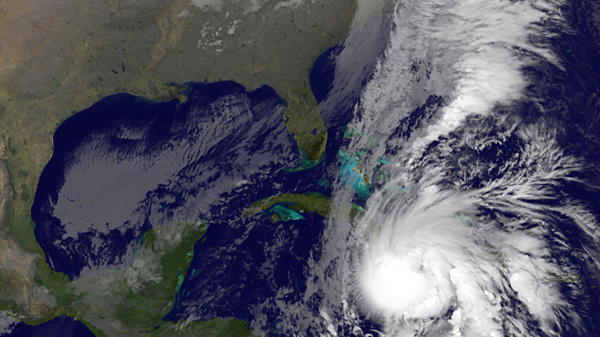Communicating is what I do in my job, I’m the Cabot Institute Coordinator and I have a responsibility for looking after the website, blog and Twitter account, creating the weekly newsletter and running the Cabot Press Gang – a group of postgraduates at the University of Bristol who are keen to improve their communication skills in the context of environmental research by blogging and writing press releases.
A week ago I had the pleasure in attending Communicate, an environmental communications conference run by Bristol Natural History Consortium. I always look forward to attending Communicate and this year has to be one of the best years yet proven by the emotive tears, the curious addition to the goody bags and some excellent talks by some of the best environmental communicators in the UK.
The non-story of climate change
 |
| George Marshall. Image credit Rutgers |
One of the first speakers to take to the stage at Communicate was George Marshall, a fantastic speaker and co-founder of the Climate Outreach and Information Network (COIN). George said that we need data, graphs, numbers and logic to help demonstrate our social values, metaphors, experiences and stories. Stories are socially conveyed and climate change is conveyed by members of the public from narratives that they have heard.
George asked how we challenge the non-story or ‘the silence’? Unfortunately climate change narratives compete with each other. Climate change is the perfect problem as it is distant in time and place, uncertain, costly and unprecedented.
One of the things that stood out for me in George’s talk was when he asked if the perfect problem is a generated narrative? When looking at a list of who or what will be harmed by global warming, people always put themselves at the bottom of the list and put future generations and plants and animals at the top. George said that climate change is cognitively and emotionally challenging so we generate and share narratives that enable us to reject it, ignore it or shape the issue in our own image.
 |
| Image from Collateral Damage |
George also pointed out that the most compelling stories contain enemies with intention to cause harm. For example, if you put North Korea as the sole causers of climate change we would look at this issue very differently. The story of climate change is in search of an enemy. Environmental organisations are guilty of blaming ‘enemies’ such as oil companies and Rupert Murdoch for climate change. But climate change doesn’t have an enemy, we’re not deliberately setting out to destroy the planet, we just want to ensure we can live and our families can survive.
Emotive tears – when communicating gets personal
After hearing George’s talk about the importance of love and empathy and personalising an environmental message in communications, I was reminded again of this importance during a very special talk by Steve Micklewright of Birdlife Malta and the very brave Ruth Peacey, who has worked on a variety of nature programmes for the BBC but had travelled to Malta to film a campaign against spring bird hunting.
During their talk titled the ‘Massacre of Migration’ they showed several films, featuring Chris Packham, of the devastating effects of hunters on Malta who shoot down migrating birds. The films were heartbreaking and those involved with the films were brave when up against some very threatening behaviour. One film featuring Chris Packham crying because he was so distressed at the awfulness of the situation he had found himself to be in, was so emotive that the whole conference room started welling up. Even the chair of the conference shed a tear as he too was touched by this emotively communicated message.
We all felt something in that room, because we all love nature and the environment. We were all touched by Chris Packham’s tears because he was communicating about something he loved. Ruth summed up the talk by saying that there is always an excuse not to do something and sometimes you have to be brave and take a risk when communicating. She also pointed out that there are lots of media channels out there to get your message across including TV and online and not to limit yourself to the big four (BBC1, BBC2, ITV, Channel 4). What I learnt was to communicate with heart and soul and I hope we can start to embed some of this into some of Cabot’s communications outputs during 2015 when we celebrate Bristol as European Green Capital.
The curious incident of the Air Wick freebie
 |
| The Air Wick in my goody bag… |
One last thing that really stood out at the conference was a peculiar freebie in my goody bag. An Air Wick. I was perplexed. I looked at this and my first impressions were ‘well that’s not very environmentally friendly is it!’. What was this plastic container of chemicals doing in my bag? It was a good icebreaker at the tables, we all came up with theories ranging from ‘maybe we smell’ to ‘it must have something to do with National Parks’. That last comment was as close to the truth as we could have got. Kathryn Cook of National Parks UK took to the stage and told us it was their Air Wick product. So how and why does a nature based organisation team up with a big brand?
Kathryn explained that collaborating with brands can help raise money to do the things that will help the environment. Engaging with brands who are already affiliated with what you do only lets you target your usual audience. However, engaging with new brands helps you to reach new audiences who don’t engage with you normally. Kathryn found it challenging to convince her Board to link with a brand and that it was also difficult to manage expectations; adopt a truly collaborative working process; and keep up with the pace of working with a commercial company.
By working with Air Wick, the National Parks UK have had an income valued at £100,000 and outreach has been three quarters of UK adults who would have seen the TV ad campaign amongst other communications outlets. Since working with Air Wick, numerous organisations have approached them to collaborate including Halfords, Biffa, Esso, BP, Cotswolds and Disney but whichever organisations they choose to work with must convince them that they meet up with their ethics and be as sustainable as possible.
Kathryn finished by saying that environmental communicators won’t speak to new audiences through fluffy nice organisations because they don’t communicate to other larger audiences. Kathryn felt that you need to engage with the more corporately inclined companies to reach those new audiences who won’t usually engage with you.
Although I wasn’t sure how I felt about National Park’s affiliation with a chemical group, I was impressed by their bravery and tenacity to do something a little bit different to save themselves and the natural beauty of the UK.
One quote stuck in my mind during that conference. Environmental comms guru Ed Gillespie said that if we’re not p*ssing anyone off then we’re not changing anything.
Too true.



.jpg/800px-Flickr_-_DVIDSHUB_-_USS_Iwo_Jima_assists_Haiti_after_Hurricane_Tomas_(Image_1_of_7).jpg)













